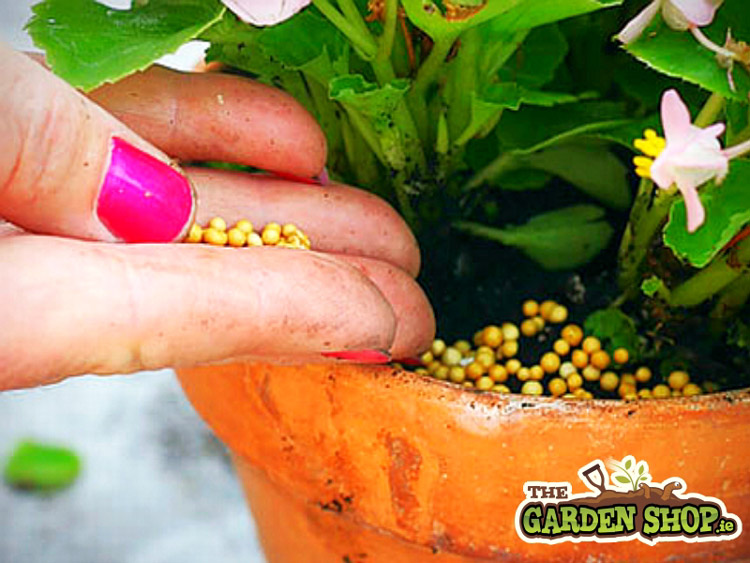Recommended Plant Feed & Fertilisers
These days there is dizzying range of garden feeds & fertilisers available in the market. With so many to choose from it can be hard to know which is right for your garden. So we are here to simplify things & try to explain the most appropriate feed for your garden & for your plants.

A Before we list & recommend a feed we should first explain a little bit about all fertilisers & that is the basic elements that make up most plant feeds.
Every time you buying a fertiliser you will see three numbers on the packaging such as 10:2:7, 10:10:10 or 5:2:7. These numbers outline the 3 main ingredients found in fertiliser & the 3 most important elements for trees, shrubs, lawns, vegetables & all garden plants. These macro nutrients are Nitrogen : Phosphorous : Potassium (N:P:K). So when we see a fertiliser with 5:2:7 we know that this feed will have 5 parts N: 2 parts P: & 7 parts K. The rest of the fertilser will be made up of a carrying agent & most times trace elements or micro nutrients (less important) such as copper, iron, magnesium, boron, manganese or sulphur
Nitrogen : Phosphorous : Potassium
- Nitrogen is important for green growth, cell division & production of plant hormones
- Phosphorous is essential for root development
- Potassium is essential for fruit & flower development & disease resistance
Soil Tests
If you wish to improve your soil, you should first do a soil test. This will allow you to determine the level of macro nutrients in your soil. For a more advanced soil test you can take samples to your local farming co-op & they can determined levels of marco & micro nutrients. From that you can determine what your soil is deficient in & therefore which fertiliser would be most appropriate.
Recommended Feeds & Fertilisers
- Conifers: Any general, multi purpose feed is perfect for conifers (Try our fish blood & bone)
- Acers: Any feed that is low in Nitrogen
- Bare root hedging: Feed that is high in phosphorous & contains Mycorrhizal Fungi (try our RHS Rootgrow)
- Young Trees: Any general feed is perfect. Ideally add a hand full (35grams) at time of planting (Try our growmore)
- Lavender: These plants require little feeding & prefer low soil fertility. Apply lime every 3 years (try our garden lime)
- Tomatoes: Start with a feed that is highest in Phosphorous. When flowering starts change to a fertiliser highest in Potassium (Try our tomato feed)
- Hanging baskets & containers: We recommend a slow release fertiliser high in Potassium. We also suggest adding water retaining crystals to prevent soil drying out (Try our slow release plant food)
- Roses: To ensure plenty of flowers, choose a feed highest in Potassium (try our Organic Rose & Shrub Food)
- Herbaceous Perennials: Like roses, add plenty of Potassium for good flowering, But for luscious borders we always recommend adding plenty of well-rotted farm yard manure to the planting hole at time of planting (Try our sulphate of potash)
- Lawns: Feed in mid Spring with a feed highest in Nitrogen. Don't feed after mid July (Try our Ammonium Sulphate)
- Potatoes: Spuds are a hungry vegetable & should only be grown in rich soil. Before planting you can improve your soil by adding manure (Try our bags of farm yard manure)
- Azeleas: These acid loving plants will benefit from a feed with a low pH. You can use a specific ericaceous feed or you can use a feed with trace elements such as sulphur or Iron (Try our Sequestered Iron)







